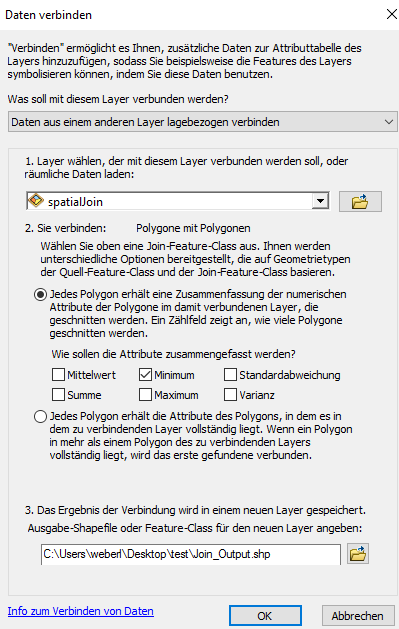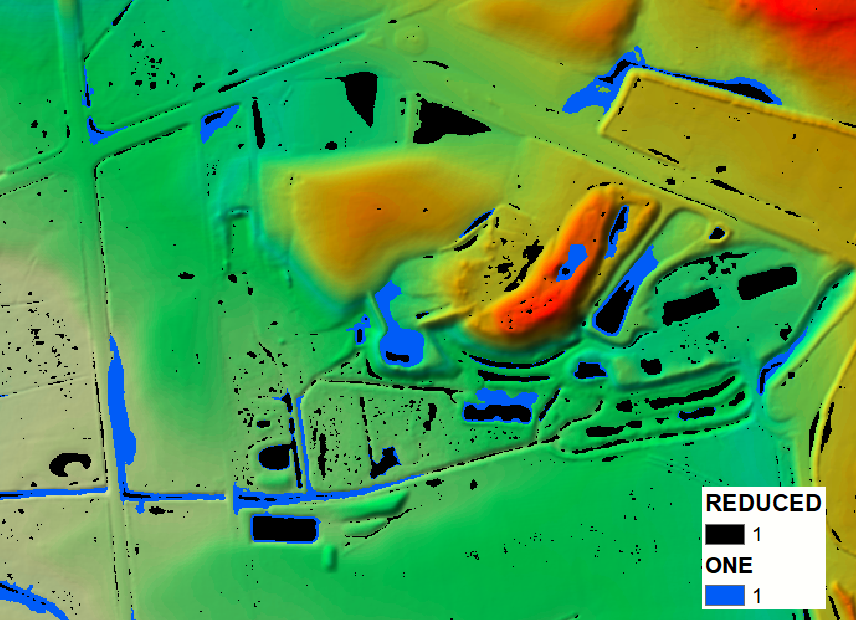I have a DEM and I want to fill every sink with a Value of 2 meter. If a sink is less than 2 meter, it is filled full and if it is bigger, it is filled until it reach 2 meter.
The problem is that this does not work with the Spatial Analyst Tool Fill. If the sinks are deeper than the Z-Limit, they will not be filled.
After the fill, the original DEM is subtracted from the filled DEM. With this, I want to get a sink raster, which will show the depth of the water if the sinks are filled up to 2 meters.
I also tried the answer of the question asked here (Partially fill a sink - ArcGIS), but it does not really work.
This image shows a sink of my dem. The sink is roughly 10 m deep.

Here you can see the area after the method used in (Partially fill a sink - ArcGIS). The dark blue colour has the value 2 and the white 0. That cannot be, because the outer to inner part of the sink has a difference of 10 meters.
This image shows how the raster roughly should look like (I am sorry, I´ve got only Paint at my disposal). You can see clearly how deep the water is at each spot and is filled up to 2 meters.





